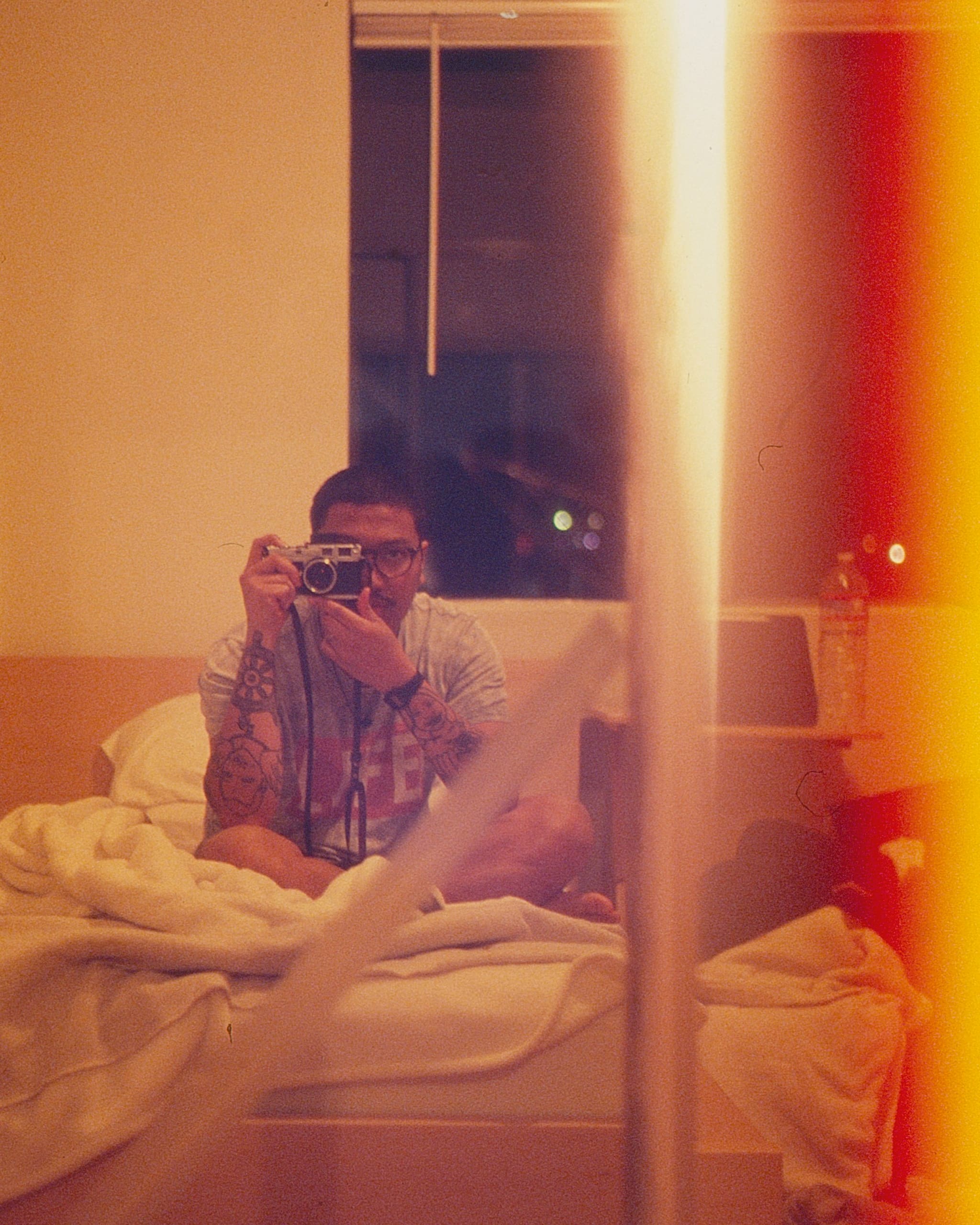Geloy Concepcion
Geloy Concepcion’s photographs are mere channels for telling the stories of everyday passersby.
Vogue Philippines invited 10 artists to showcase what “celebration” means to them through their chosen medium. Photographer and artist Geloy Concepcion’s images celebrate life by capturing one’s proof of existence.
For photographer and artist Geloy Concepcion, his images are no longer just about photography, but about the ability to tell the stories of those around us who often go unheard.
The United States-based creative, who has shot for the likes of the New York Times and the San Francisco Chronicle, has garnered an incredible audience with his captivating images. His project, Things You Wanted To Say But Never Did has been described as “some of the most powerful photos on Instagram,” garnering him over 621,000 followers on the platform since it began in 2019. It sees Concepcion’s photos overlaid with thoughts; unspoken sentiments sent to him by thousands of strangers online.
Concepcion tells us that as of today, he has received over 80,000 messages from people all around the world. This is just one medium the photographer uses to uncover the inner workings of individuals. It’s in discovering these stories that Concepcion finds the true magic in what he does.
As a documentary photographer, his other means involve walking through the city’s streets in hopes of finding someone willing to share with him a bit of their lives. According to him, it’s always a game of trial and error.
Some will say hello, and quickly walk away. Other times, he finds himself in conversations so engaging that no photo ever gets taken. “Hindi siya one way. Lagi siyang collaboration sa subject mo,” he says. [It’s never one-way. It’s always a collaboration with your subject.] Concepcion tells us that you never become an expert at approaching subjects. To this day, he still feels shy or nervous.
Concepcion’s path to photography stemmed from his previous passions. He started as a street artist in college, with the hopes of one day becoming a cartoonist. But whenever he would go out and paint, his attention would be taken by the individuals he would see around him.
“Nag shift yung focus ko dun eh. Nawala sa mga pader, napunta sa mga tao makikita namin.” [My focus moved from the walls to the people we would see].
After taking a photography class in his second year, and acquiring a camera of his own, he was hooked. The new medium became a passion. However it was only years later, when he moved to the United States with his family, that he found his niche as a film photographer, partly due to circumstance.
As a new immigrant, Concepcion could not look for work right away, until his papers could be processed. For two to three years he was, as he says, a “house husband,” taking care of his newborn daughter. At first, he would only go out to shoot once a week. Eventually, he began shooting at home, capturing intimate portraits of his family life.
The slow process of film photography matched his pace of life in his new home. “Di mo nakikita agad yung kinukunan mo so, naiipon lang siya. Naiipon ko yung film na di mo alam kung ano yung laman. Tapos pupunta kami downtown, papaprocess ko yung film ko.” [You don’t see your pictures right away, so you collect your film, not knowing how it will turn out. Then I would go down town to have them processed.”
According to Concepcion, the thrill with film is that you feel the experience of capturing an image twice; once when you press the shutter, and then when you finally get the processed image if nothing goes wrong during development. One may wonder, why go through the worry of not knowing whether your pictures are good, or if they come out at all when with digital cameras you can see them in an instant.
The answer may be found in seeing the final result. “Iba talaga,” Concepcion says. [It’s really different].
“Chemical siya eh. Physical siya. Walang computer dun. Kumbaga, walang digital na gamit. Kuhang kuha lahat ng kulay.” [It’s a chemical process, a physical process. There are no computers or anything digital involved in making the image. Every color is captured.]
“Photography for me will always be a celebration of life. A proof of your presence. A testament that those things happened. I don’t care if it’s pain, loneliness, or grief; you’re able to take the pictures because you’re there. Alive.” —Geloy Concepcion






